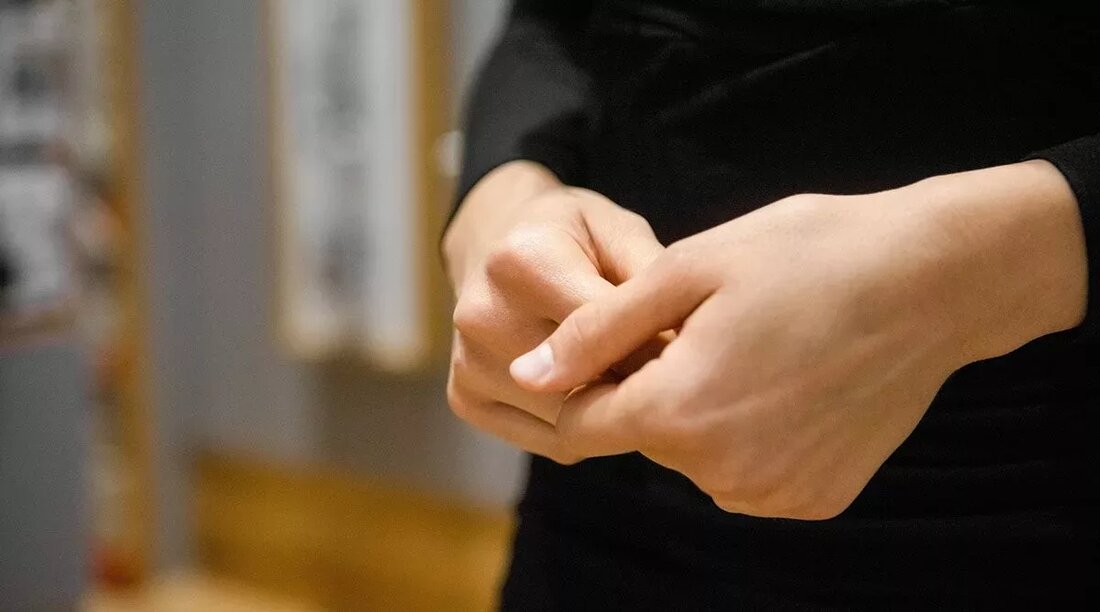Are you afraid of bad breath?
Bad breath or fear of bad breath is a common but poorly understood condition. The diagnosis is based on the separation between the person's feeling of bad breath and the perceived experience by others that there is no unusual smell. Most treatment protocols offer one of two different approaches: 1. Behavior modification or cognitive behavioral therapy (CBT). Everyone encourages thought changes to encounter the unreality of the symptom. Often combined with a non-therapeutic partner who responds calmly to exhaled breath by commenting on the smell. 2. Psychoanalytically oriented psychotherapy combines the current experience (increased belief in the bad smell of the person) with fears...

Are you afraid of bad breath?
Bad breath or fear of bad breath is a common but poorly understood condition. The diagnosis is based on the separation between the person's feeling of bad breath and the perceived experience by others that there is no unusual smell. Most treatment protocols offer one of two different approaches:
1. Behavior modification or cognitive behavioral therapy (CBT). Everyone encourages thought changes to encounter the unreality of the symptom. Often combined with a non-therapeutic partner who responds calmly to exhaled breath by commenting on the smell.
2. Psychoanalytically oriented psychotherapy combines the current experience (increased belief that the person smells bad) with fears of rejection from the past. Through an emotionally corrective experience with the therapist, patients gain confidence that their fear of bad smell can be reduced to a treatable symptom rather than a global fear.
While both therapies provide important relief (along with anti-anxiety or depression medications to reduce symptom pressure), neither is sufficient to control the phobic elements of the disorder, which include:
– Alertness to the reactions of others
– Reference signs, meaning that people turn away from them because they are repelled by their bad breath, which can lead to self-fulfilling reactions
– Panic reactions including shallow breathing, sweating, fainting, etc.
The challenge to successful psychotherapy for these individuals remains the persistence of the delusional elements of the phobia. Even if you don't smell bad today, how can you trust that your bad breath won't return tomorrow?
For example, a patient referred by his dentist complained of social isolation due to his perception of the smell of his breath. After a detailed history, the patient admitted that he had no real information about his actual bad breath, but inferred from people's reactions that he was disgusting towards them. His deductions involved people on the subway turning away from him or covering their mouths or noses in his presence. He acknowledged the possibility that he could inspire confidence in others, but felt helpless to prove or disprove his theory. As we developed more rapport, he agreed to let me smell his bad breath by exhaling into my face.
He was stunned when I didn't turn away in disgust but rather found a completely neutral bad breath. He agreed to recruit a partner - either a family member or a friend - to respond to his concerns about his mouth. However, he found the “recruitment” process overwhelming and so maintained his individual connection with me as a therapeutic ally. Although we have partially curbed his anxiety, the case highlights some of the challenges of treatment:
Challenges for successful treatment:
1. Referrals, usually from dentists, are difficult. Halitophobes should not be directly confronted with the unreality of their symptom. Typically, a milder form of “probing” the problem is more successful, a skill that many traditional dentists may lack.
2. Treatment requires a committed patient. The therapies recommended above require time, effort and training.
3. The process of de-stimulation is long - possibly lifelong - with peaks and troughs of disruption
4. Resistance to changing beliefs about the reality of their breath smell may be associated with increased anxiety in other functions of daily life. This should be understood and prepared before treating bad breath.
treatment recommendations;
There is no literature on the use of group psychotherapy to treat bad breath. I imagine that the principles of AA sponsorship (shared belief in the lack of control over the symptom) by and from other group members and on-call availability in times of crisis can be important foundations for a successful solution to bad breath.
However, I do not believe that the model in and of itself is sufficient. AA is dedicated to substance use and features a “black and white” test that lacks halitophobia. The fear of bad breath if left untreated is global and based on self-testing of the environment.
A group experience would optimally benefit from traditional methods of group psychotherapy that focus on how our current lives replay, often unconsciously, experiences from our previous life experiences. Without the depth of understanding that group members can provide, the AA model may alleviate the symptom without clearly understanding the significance of the symptom in that person's life. In this way, the bad breath person may lack the emotional maturity to fully make the connection between their current symptom and other life events. A mature therapy group actually reflects the experience of reenactment during the group. Emotionally literate and resilient groups can communicate to their participants the impact of their behavior, language, and emotions. And perhaps other group members provide a basis for their fear.
The victim problems of bad breath are indeed high. There is often panic about entering social relationships due to fear of rejection. The AA model is a starting point for confronting symptom control. However, individualized treatment that takes into account both the etiology of the symptom and the behavioral change would be helpful. An ongoing psychotherapy group that addresses bad breath, but also issues of life adjustment after a life full of delusional isolation and fear, would be ideal.
Alternative practitioner psychotherapy
The best place to find alternative practitioners psychotherapy is in our free alternative practitioner directory. To view all alternative psychotherapy practitioners, please click here.

 Suche
Suche
 Mein Konto
Mein Konto
